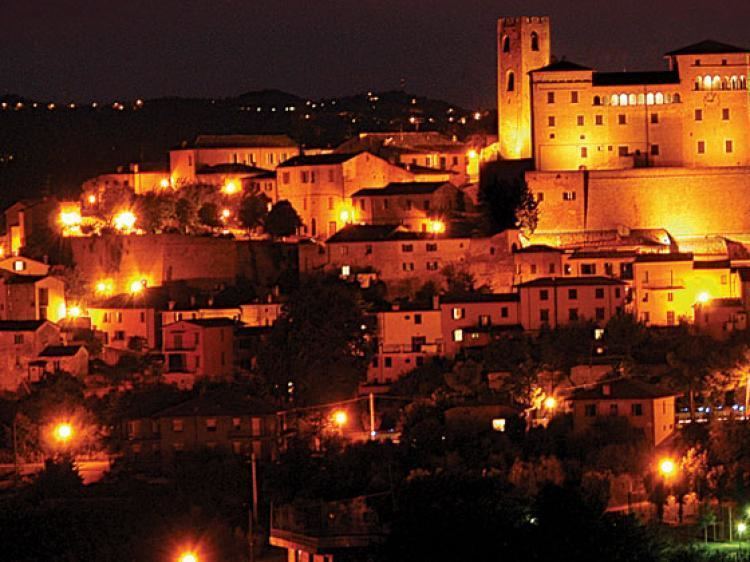Comuni 30 Telephone prefix 0543, 0547 Population 398,322 (2012) | Region Emilia–Romagna Time zone CET (UTC+1) Area 2,377 km² Capital Forlì | |
 | ||
Postal code Forli 47100Elsewhere 47010-47040 Points of interest Abbey of San Mercurial, Rocca di Ravaldino, Musei di San Domenico, Rocca Malatestiana, Pinacoteca Comunale di Cesena Destinations Foreste Casentin, Cesenatico, Cesena, Forlì, Predappio | ||
The province of Forlì-Cesena (Italian: provincia di Forlì-Cesena) is a province in the Emilia–Romagna region of Italy. Its capital is the city Forlì. The province has a population of 395,897 as of 2015 over an area of 2,378.4 square kilometres (918.3 sq mi), giving it a population density of 166.46 inhabitants per square kilometre. Forlì has a population of 118,255, and Cesena has a population of 96,885. It contains 30 comuni and the provincial president is Davide Drei.
Contents
Map of Province of Forl%C3%AC-Cesena, Italy
History
Forlì was founded by the Roman consul Marcus Livius Salinator, and it was connected to the Via Aemilia in 188 BCE. By the 12th century CE, it had become a Ghibelline commune and military garrison. The Holy See initiated a small attempt to rule Forlì in 1278, but the family of Ordelaffi led the city from 1315 until 1480; during this period, the Holy See attempted to regain control but were unsuccessful. Spanish Pope Alexander VI ordered his son Cesare Borgia, Duke of Valentinois, to Forlì and other communes in the region; Borgia was successful in 1500. Until the formation of the Kingdom of Italy, it remained under the rule of the Holy See.
Cesena was first owned by the Romans until the fall of Rome, when it was taken by the Byzantine Empire. Following this, it was owned by archbishops of Ravenna. During the period of issues between the Guelphs and Ghibellines, the Holy See took over Cesena from the Ordelaffis. Antipope Clement VII's troops almost completely destroyed Cesena in 1377, and the Pope gave the city to the House of Malatesta. After the House of Malatesta controlled the city from 1378 to 1465, the Holy See regained control of Cesena. Leonardo da Vinci designed the port Cesenatico. It remained under papal rule until Italy was unified.
In 1921, there was a rapid advance of the Fascist movement in the region triggered by issues connected with agrarian reform. Buildings belonging to the republicans and socialists were seized or burnt down by Italo Balbo, and on July 29, he and his men moved throughout the provinces of Ravenna and Forlì, burning every socialist organisation headquarters in a night of terror which was later called the "column of fire". This was a pivotal moment in the advance of Fascism in northern Italy.
Geography
The province of Forlì-Cesena is one of nine provinces in the region of Emilia-Romagna in the northeast of Italy. Along with Rimini, it is the most southerly of the provinces in the region and it abuts onto the Adriatic Sea for a short distance. The Province of Ravenna lies immediately to the north and the Province of Mantua in Lombardy to the northwest. To the west lies the Province of Florence in the region of Tuscany, the Province of Arezzo, also in Tuscany, lies to the south, and the Province of Riminilies to the southeast. The provincial capital is the city of Forlì, which is situated on the bank of the Montone river about 70 km (43 mi) southeast of Bologna.
